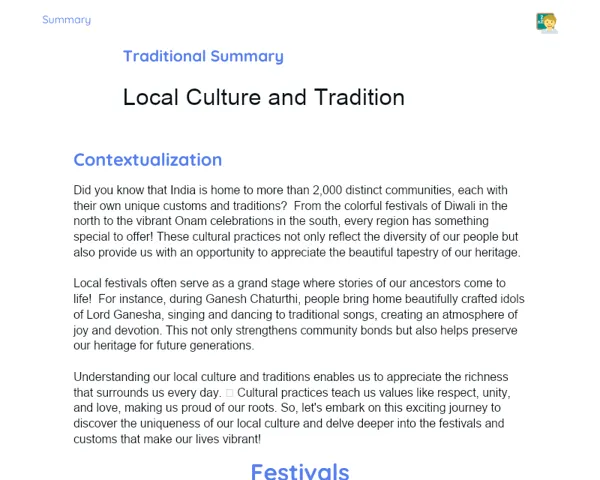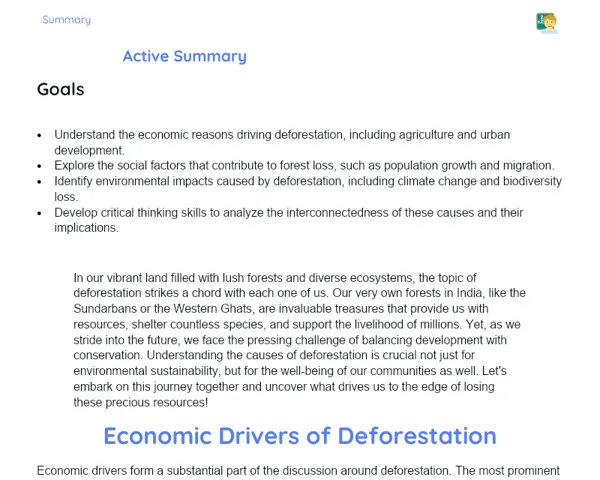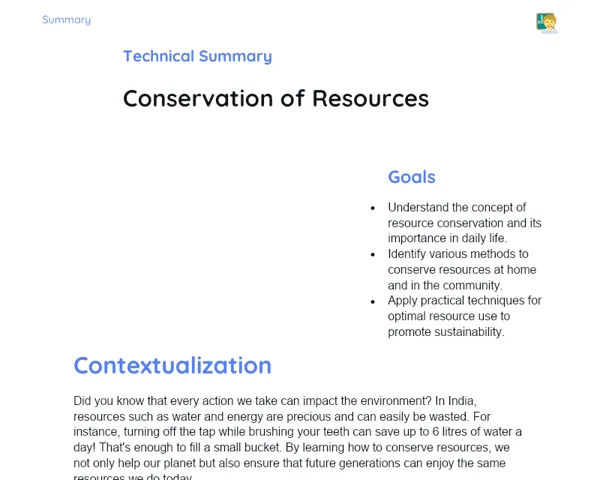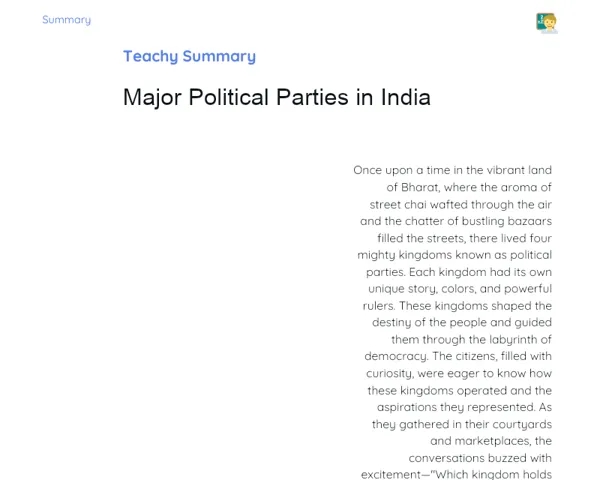Embracing the Monsoon: Nature's Rhythm and Our Emotions
Goals
1. Understand the monsoon system and its seasonal variations.
2. Identify the impact of monsoons on agriculture and water availability.
3. Recognize the significance of rainfall patterns in the context of the water cycle.
Contextualization
Did you know that the Indian monsoon contributes nearly 70% of the annual rainfall in our country? 🌧️ This life-giving storm not only quenches the thirst of our lands but also plays a crucial role in shaping our agriculture and economy. So, the next time you hear the rhythmic patter of rain on your window, think about how deeply intertwined it is with our lives!
Exercising Your Knowledge
The Monsoon System
The monsoon system is a dynamic weather phenomenon that influences the climate of India and many other countries. Originating from the differences in land and sea temperatures, these winds shift direction seasonally, bringing heavy rains during the monsoon months. This system not only fills rivers and lakes but also replenishes groundwater, vital for agriculture and everyday life. Understanding this system helps us appreciate its vital role in sustaining ecosystems and livelihoods, leading to a more profound respect for nature's rhythms. 🌍
-
Seasonal Shifts: The monsoon typically arrives around June and retreats by September. This seasonal cycle is crucial for planning farming activities, as it dictates planting and harvesting times.
-
Influence on Biodiversity: The rains during the monsoon season foster rich biodiversity. Many local plants and animals rely on these rains for their life cycles, showcasing the interconnectedness of ecosystems.
-
Cultural Significance: The monsoon is celebrated in many cultures across India, symbolizing fertility and prosperity. Festivals and traditions often center around the arrival of rains, reflecting the emotional connection communities have with this natural phenomenon.
Impact on Agriculture
Agriculture, the backbone of India's economy, is heavily dependent on the monsoon rains. The arrival of the monsoon transforms dry landscapes into fertile fields, allowing farmers to cultivate crops that feed the nation. However, fluctuations in rainfall patterns can lead to either floods or droughts, highlighting the importance of understanding and managing these impacts. By learning about the monsoon’s effects, you’ll see how agriculture is not just about growing food, but also about nurturing our emotional well-being and community resilience. 🌾
-
Crop Diversity: Different crops thrive in varying rainfall conditions. Understanding these requirements helps farmers choose suitable crops for the prevailing monsoon conditions, leading to better yields.
-
Economic Stability: A good monsoon can boost farmers' incomes, leading to economic growth in rural areas. Conversely, erratic rainfall can lead to financial distress, impacting entire communities.
-
Sustainable Practices: By studying the monsoon's patterns, farmers can adopt sustainable farming practices, ensuring that they work in harmony with nature, which fosters both ecological and emotional well-being.
Rainfall Patterns and Water Cycle
The water cycle is a continuous process that is fundamentally linked to the monsoon system. Rainfall patterns during the monsoon contribute to the replenishment of rivers, lakes, and groundwater resources, vital for both human activities and natural ecosystems. Recognizing how these patterns function can help us appreciate the importance of water conservation and management in our daily lives, enhancing our ability to support each other in our communities during tough times. 💧
-
Water Conservation: Understanding how monsoons affect the water cycle can help communities implement rainwater harvesting systems, ensuring water availability throughout the year.
-
Flash Flood Awareness: Sudden, intense rainfall can lead to flash floods. Awareness of rainfall patterns aids in disaster preparedness and community resilience.
-
Long-term Climate Impact: Changes in the monsoon pattern due to climate change can affect rainfall distribution, prompting the need for discussions and actions around sustainability and collective responsibility.
Key Terms
-
Monsoon: A seasonal wind pattern that causes heavy rainfall, vital for agriculture and water supply.
-
Water Cycle: The continuous movement of water within the Earth and atmosphere, influenced significantly by monsoon rains.
-
Biodiversity: The variety of life in the world or in a particular habitat, often flourishing during monsoon seasons.
For Reflection
-
Reflect on how the monsoon season affects your emotional state. Do you feel more connected to nature during the rains? How does it impact your daily life?
-
Consider the role of agriculture in your community. How do the farmers’ experiences during the monsoon season impact your understanding of their challenges and triumphs?
-
Think about water conservation in your household. How can understanding the monsoon and the water cycle inspire you to engage in practices that support sustainable water use in your community?
Important Conclusions
-
The monsoon system is a powerful natural phenomenon that significantly influences our climate, agriculture, and the water cycle.
-
Understanding the seasonal variations of monsoons helps in predicting agricultural practices and managing water resources effectively.
-
Recognizing the interconnectedness of the monsoon with biodiversity and cultural practices highlights its importance in sustaining both nature and communities.
Impacts on Society
The current impacts of the monsoon system are profoundly felt across society, especially in agricultural communities. With nearly 70% of our annual rainfall occurring during the monsoon, farmers rely heavily on this season for their crops. A good monsoon means prosperous harvests, leading to economic stability and food security, which are vital for everyone's well-being. Conversely, unpredictable rainfall patterns can result in devastating floods or crippling droughts, affecting farmers' livelihoods and causing emotional distress within communities. This cycle of dependency reflects not only our agricultural foundation but also the emotional ties we share with the changing seasons, where joy and anxiety coexist in the hearts of those who depend on the rains for sustenance. 🌾
Moreover, the effects of the monsoon extend to urban areas as well. The associated rainfall patterns influence water supply for households and industries, impacting daily life in cities. Discussions around water conservation have gained momentum, urging communities to innovate and implement rainwater harvesting systems. This collective responsibility nurtures a sense of belonging and emotional connection to our environment, empowering us to take charge of our natural resources while fostering resilience in the face of climate change. 💧
Dealing with Emotions
To help you manage your emotions while reflecting on the themes we've discussed, try out this simple exercise at home! Start by sitting in a quiet place with a notebook. Close your eyes and take a deep breath. Recognize how you feel when it rains—are you happy, nostalgic, anxious, or calm? Label these feelings; it’s important to say them out loud or write them down. Now, think about why you might feel that way. Is it because of the beauty of nature or memories associated with rain? Express these emotions creatively—maybe write a short poem or draw a picture that captures your feelings about the monsoon. Finally, try to regulate your emotions by reflecting on what you can do during the rainy season to enhance your spirit—perhaps helping out in the community or even planting a small garden! This practice will not only deepen your understanding of the monsoon's impacts but also strengthen your emotional resilience.
Study Tips
-
Visit local farms or community gardens during the monsoon season to see firsthand the impact of rainfall on agriculture. Take notes on what you observe!
-
Engage with your family about their experiences with the monsoon—collect stories and understand how it affects their daily lives. This will give you a broader context.
-
Create a monsoon calendar to help you track rainfall patterns in your area throughout the season, connecting this with what you learn about the water cycle.



